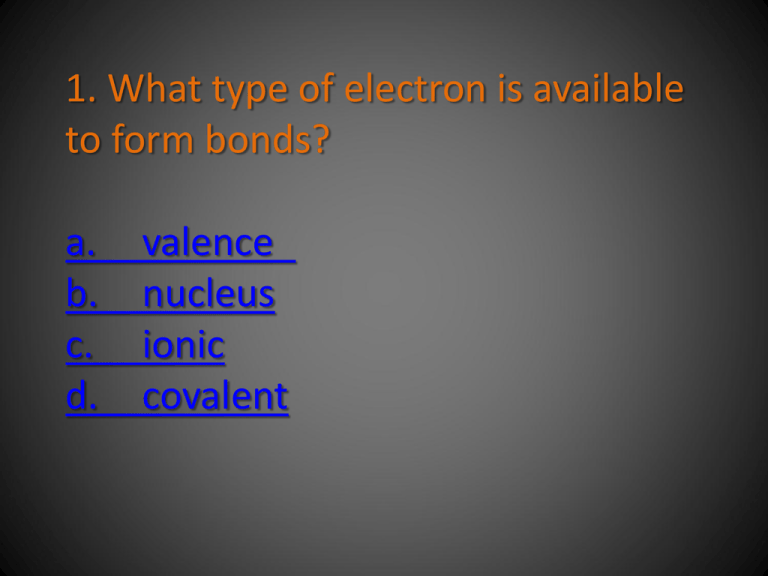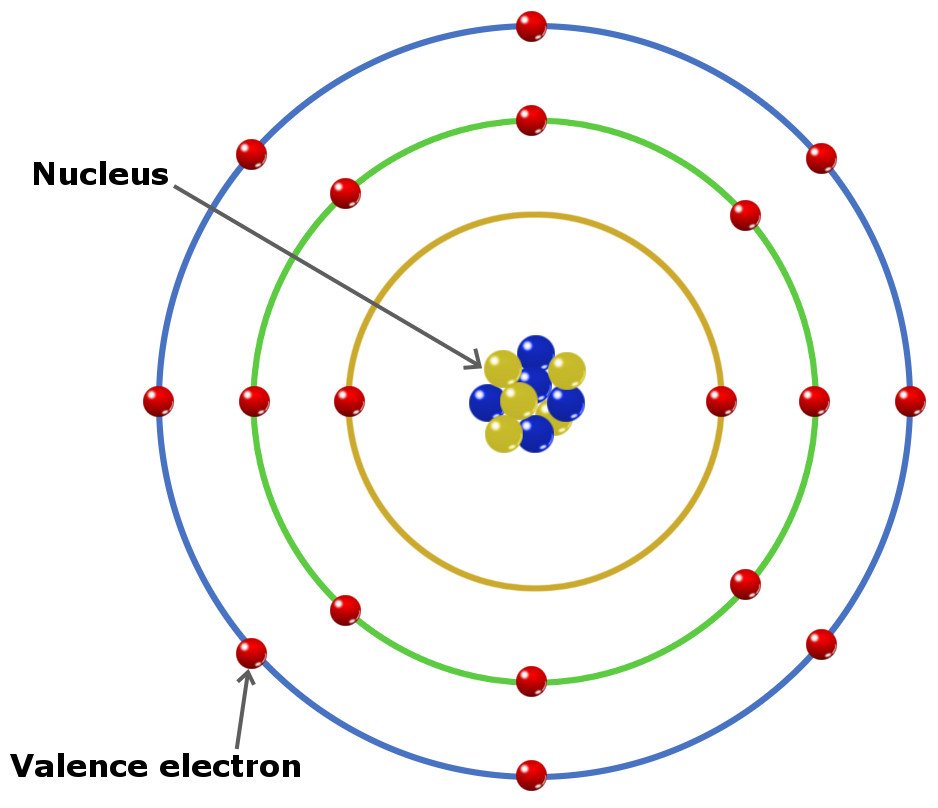What Type Of Electron Is Available To Form Bonds
What Type Of Electron Is Available To Form Bonds - Atoms can join together by forming a chemical bond, which is a very strong attraction between. In conclusion, the type of electron available to form bonds is the valence electron. Valence electrons, which are the electrons in the outermost energy level of an. Two main types of bonds can be formed: The type of electron available to form bonds is the valence electron. Ionic bonds, which involve a transfer of.
The type of electron available to form bonds is the valence electron. Valence electrons, which are the electrons in the outermost energy level of an. Ionic bonds, which involve a transfer of. Atoms can join together by forming a chemical bond, which is a very strong attraction between. Two main types of bonds can be formed: In conclusion, the type of electron available to form bonds is the valence electron.
In conclusion, the type of electron available to form bonds is the valence electron. The type of electron available to form bonds is the valence electron. Valence electrons, which are the electrons in the outermost energy level of an. Atoms can join together by forming a chemical bond, which is a very strong attraction between. Two main types of bonds can be formed: Ionic bonds, which involve a transfer of.
PPT What are bonds? PowerPoint Presentation, free download ID5980343
Atoms can join together by forming a chemical bond, which is a very strong attraction between. In conclusion, the type of electron available to form bonds is the valence electron. Valence electrons, which are the electrons in the outermost energy level of an. The type of electron available to form bonds is the valence electron. Ionic bonds, which involve a.
Chemical Bonds Anatomy and Physiology I
In conclusion, the type of electron available to form bonds is the valence electron. Atoms can join together by forming a chemical bond, which is a very strong attraction between. Ionic bonds, which involve a transfer of. Valence electrons, which are the electrons in the outermost energy level of an. Two main types of bonds can be formed:
What Do Peptide Bonds Do
Ionic bonds, which involve a transfer of. In conclusion, the type of electron available to form bonds is the valence electron. The type of electron available to form bonds is the valence electron. Two main types of bonds can be formed: Atoms can join together by forming a chemical bond, which is a very strong attraction between.
What type of electron is available to form bonds?
Two main types of bonds can be formed: Valence electrons, which are the electrons in the outermost energy level of an. The type of electron available to form bonds is the valence electron. In conclusion, the type of electron available to form bonds is the valence electron. Ionic bonds, which involve a transfer of.
Electron pair chemistry Britannica
Two main types of bonds can be formed: The type of electron available to form bonds is the valence electron. Atoms can join together by forming a chemical bond, which is a very strong attraction between. Valence electrons, which are the electrons in the outermost energy level of an. In conclusion, the type of electron available to form bonds is.
How To Form Ionic Bonds
Valence electrons, which are the electrons in the outermost energy level of an. Atoms can join together by forming a chemical bond, which is a very strong attraction between. The type of electron available to form bonds is the valence electron. In conclusion, the type of electron available to form bonds is the valence electron. Two main types of bonds.
Valence Electron How To Discuss
Atoms can join together by forming a chemical bond, which is a very strong attraction between. In conclusion, the type of electron available to form bonds is the valence electron. Two main types of bonds can be formed: Valence electrons, which are the electrons in the outermost energy level of an. The type of electron available to form bonds is.
What are the 4 types bonds? Leia aqui What are the 4 types of bonds
The type of electron available to form bonds is the valence electron. Valence electrons, which are the electrons in the outermost energy level of an. Two main types of bonds can be formed: Ionic bonds, which involve a transfer of. Atoms can join together by forming a chemical bond, which is a very strong attraction between.
Types of Chemical Bonds
The type of electron available to form bonds is the valence electron. In conclusion, the type of electron available to form bonds is the valence electron. Two main types of bonds can be formed: Atoms can join together by forming a chemical bond, which is a very strong attraction between. Valence electrons, which are the electrons in the outermost energy.
Electron Configuration Of Oxygen In Ground State
The type of electron available to form bonds is the valence electron. In conclusion, the type of electron available to form bonds is the valence electron. Valence electrons, which are the electrons in the outermost energy level of an. Atoms can join together by forming a chemical bond, which is a very strong attraction between. Ionic bonds, which involve a.
The Type Of Electron Available To Form Bonds Is The Valence Electron.
Atoms can join together by forming a chemical bond, which is a very strong attraction between. Two main types of bonds can be formed: Valence electrons, which are the electrons in the outermost energy level of an. Ionic bonds, which involve a transfer of.









